Tracing my ancestral lineage through written records has reached a halt with the last documented parental ancestor, Lawrence Pearson (b1620), who resided in the quaint village of Wilmslow, located just south of Manchester, England. While the genealogy of some aristocratic families can be traced back to 1066 and before, that of the common man can only be reliably found back to about 1600 when the church started recording baptisms, marriages and burials in England. Now, faced with this roadblock, how can I continue my quest to unravel my paternal heritage? The answer lies in the Y-DNA that I have inherited from all of my forefathers.
Y-DNA, unlike other genetic DNA material, is exclusively passed down from father to son. This is due to the fact that only males possess a Y chromosome, while females lack it, as it determines their biological sex. By tracing my Y-DNA, I can uncover the origins of my paternal lineage, stretching back even before the time of Wilmslow, England in the 1600s. My Y-DNA has been tested and identified as Q-L807. Throughout generations, the Y chromosome remains largely unaltered, except for minor discernible changes in the DNA sequence. By meticulously following these changes, I can construct a paternal family tree based on DNA, showcasing the lineage of my paternal forefathers, even leading back to a single common ancestor who lived hundreds of thousands of years ago.
Through this method, I am embarking on a captivating journey to explore my ancestors across different epochs and geographical locations, ultimately unearthing the rich history of my direct paternal surname line. To begin, please watch this video.
I will now provide additional details explaining why I have a strong confidence that my Q-L807 DNA originated from Norway approximately 1100 years ago, rather than Sweden, Denmark, or even Normandy.
I have utilized Family Tree DNA, a research platform that gathers Y-DNA samples from individuals across various regions worldwide, including native populations with ancestral ties extending back 500 years or more within a specific area. Through their comprehensive analysis of native population DNA, they can discern whether the Y-DNA markers found in my genetic profile align with those prevalent in Norway. Only 1 in 200 people in the Cheshire area has the Y-DNA Q marker making if on of the rarest ones in England.
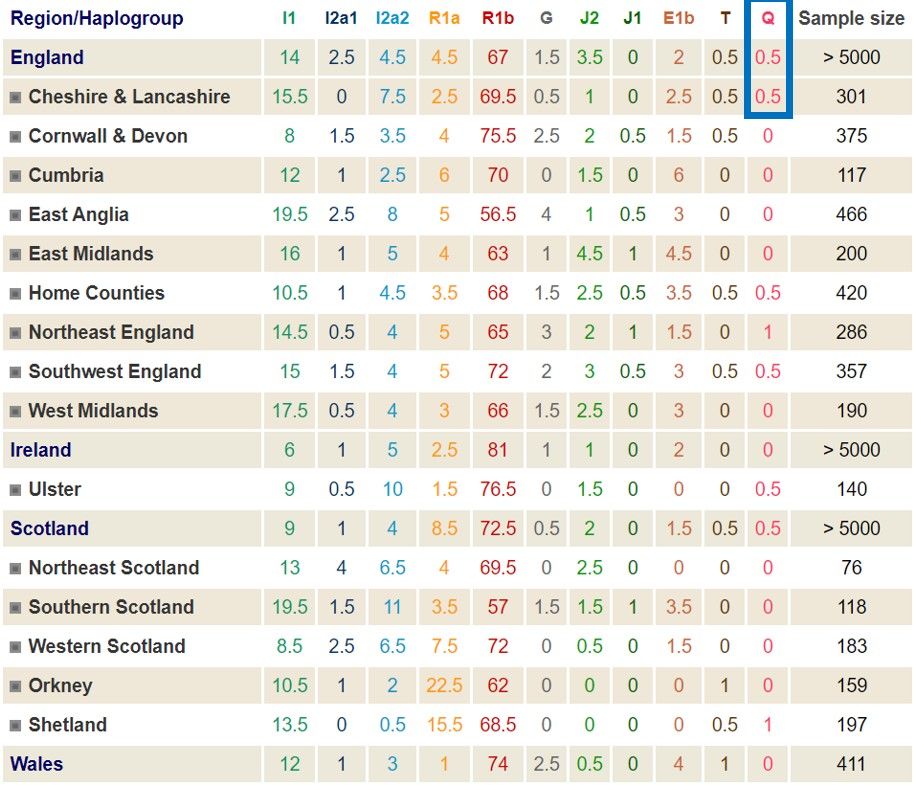
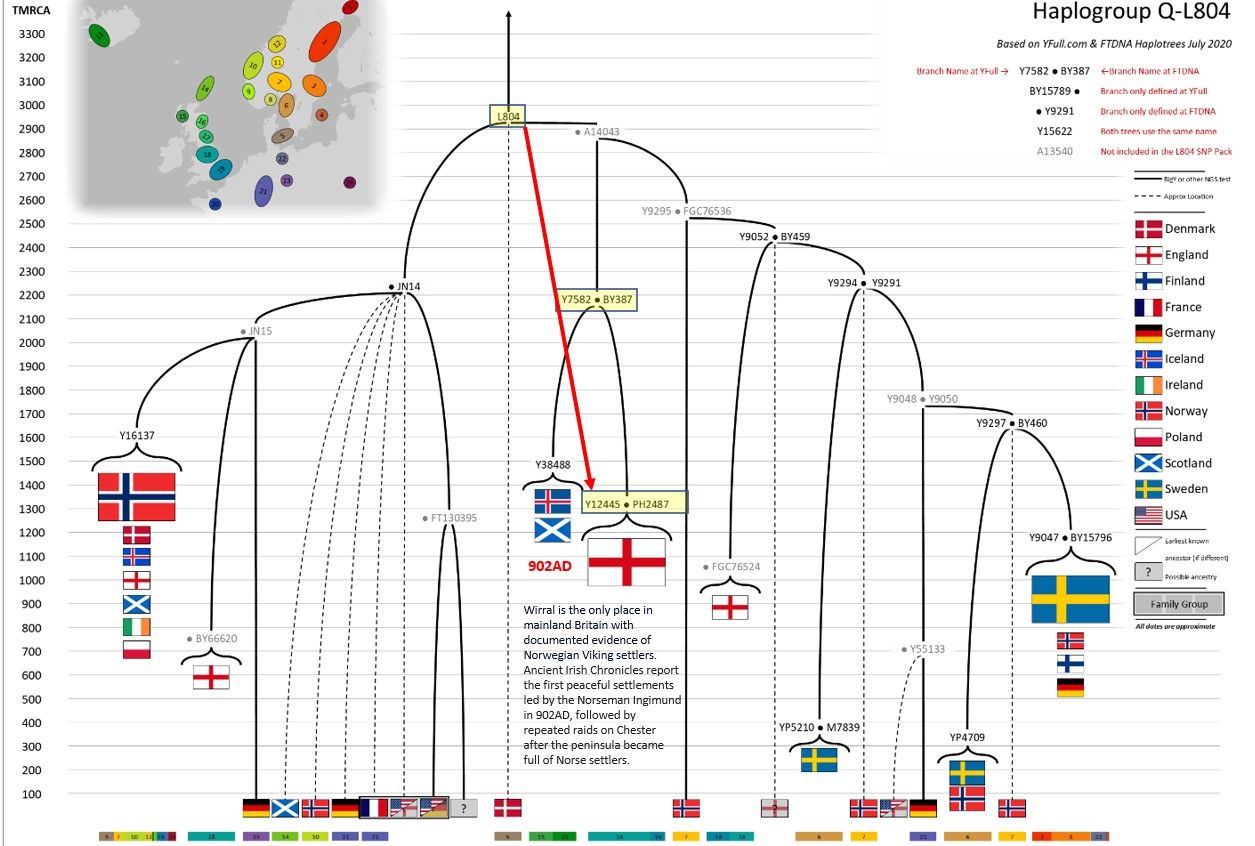
The previous video I showed you how the Q-L804 haplogroup got to Scandinavia. With the Q-L804 haplogroup tree above I will show you how and when it got to England. Highlighted in yellow are each of the subclades of Q-L804 that will finally make its way down to my Y-DNA subclade of Q-L807. The Q-L804 haplogroup is found in Norway in about 2% of the population. As you follow the tree downward, the Q-L804 subclades into Q-A14043 then Q-Y7582/Q-BY387 then further down into Q-Y12445/Q-PH2487 as it comes to England in 902AD. This is the haplogroup where 430 years later Q-L807 subclade will emerge.
Based on historical records and artifacts discovered on the Wirral Peninsula, located 40 miles west of Wilmslow, England, we have substantial evidence of early Norwegian Viking settlers in this mainland British region.
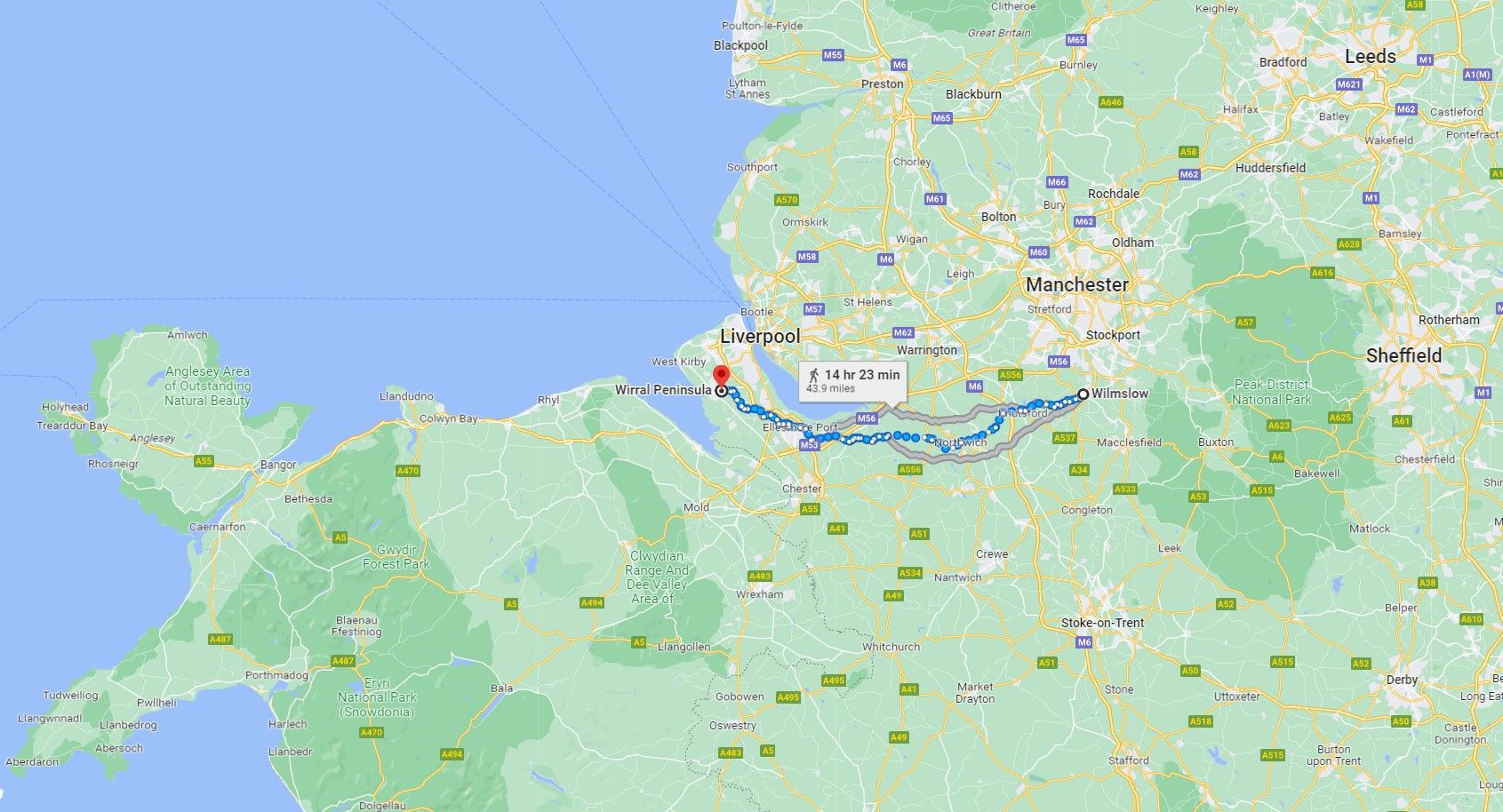
According to ancient Irish Chronicles, the first peaceful Norwegian Viking settlements took place in 902 AD. However, three decades later, they ventured further inland east and launched repeated raids on Chester, England. These incursions occurred as the peninsula became densely populated with Norse settlers, who sought additional land for settlement.
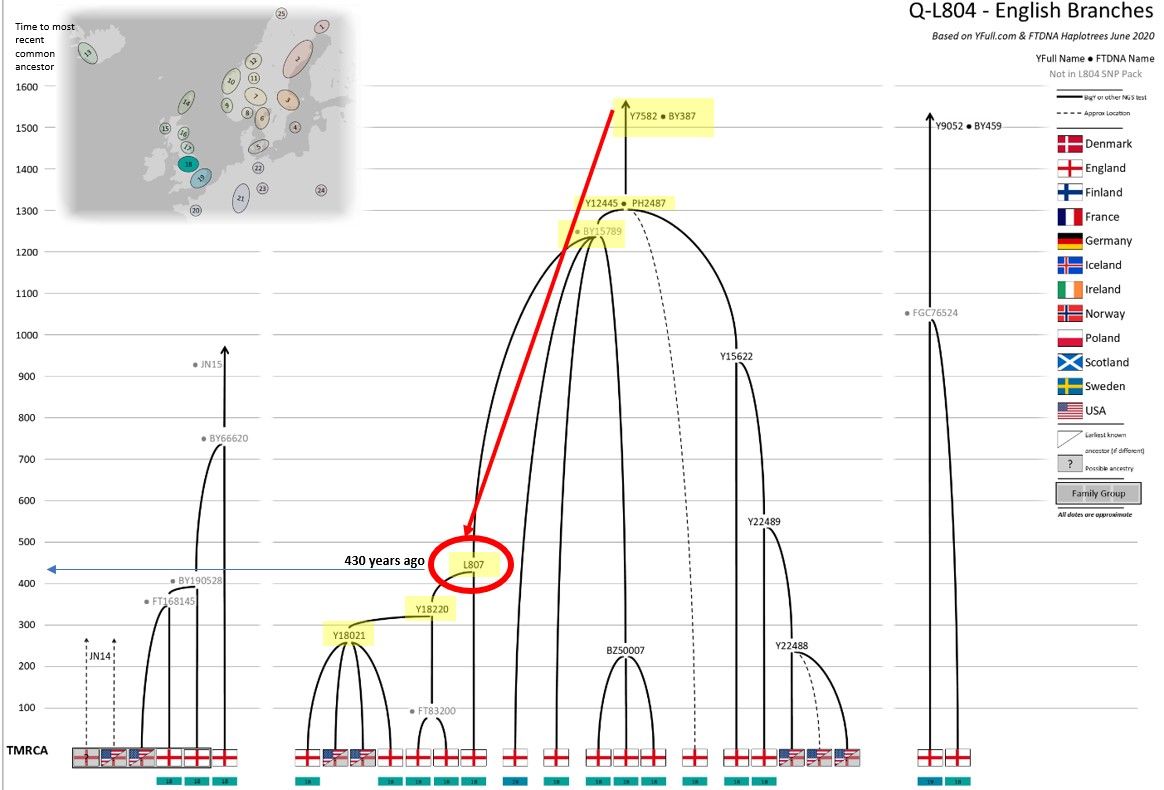
Follow the haplogroup further down the tree in this next picture and you will see that the Y7582/BY387 mutates about 1300 years ago and subclades to the Q-Y12445/PH2487 then to the Q-BY15789 subclade and then 430 years ago to Q-L807. My 8th Great- Grandfather Thomas Pearson in 1683 (340 years ago) brought the Q-L807 to America. Records from the Church of England reveal that Thomas Pearson’s father is Lawrence Pearson (b1620) making the connection between documented records in England and DNA. Q-L807 and many of its subclades still exist in England today indicating that Q-L807 originated in England before it was carried to America.
By utilizing Y-DNA analysis, this inquiry bridges my ancestry connecting Norway to England, while ruling out alternative origins such as Sweden, Denmark, or Normandy for the Q-L807 DNA.
The Q-804 haplogroup made its way from Norway to the Wirral Peninsula roughly 1100 years ago, where its Norwegian population subsequently grew in the Chester region and Wilmslow, England. It then subclade again about 430 years ago into Q-L807, and in 1683, Thomas Pearson introduced it to America and then I subsequently brought it to Oregon, USA.
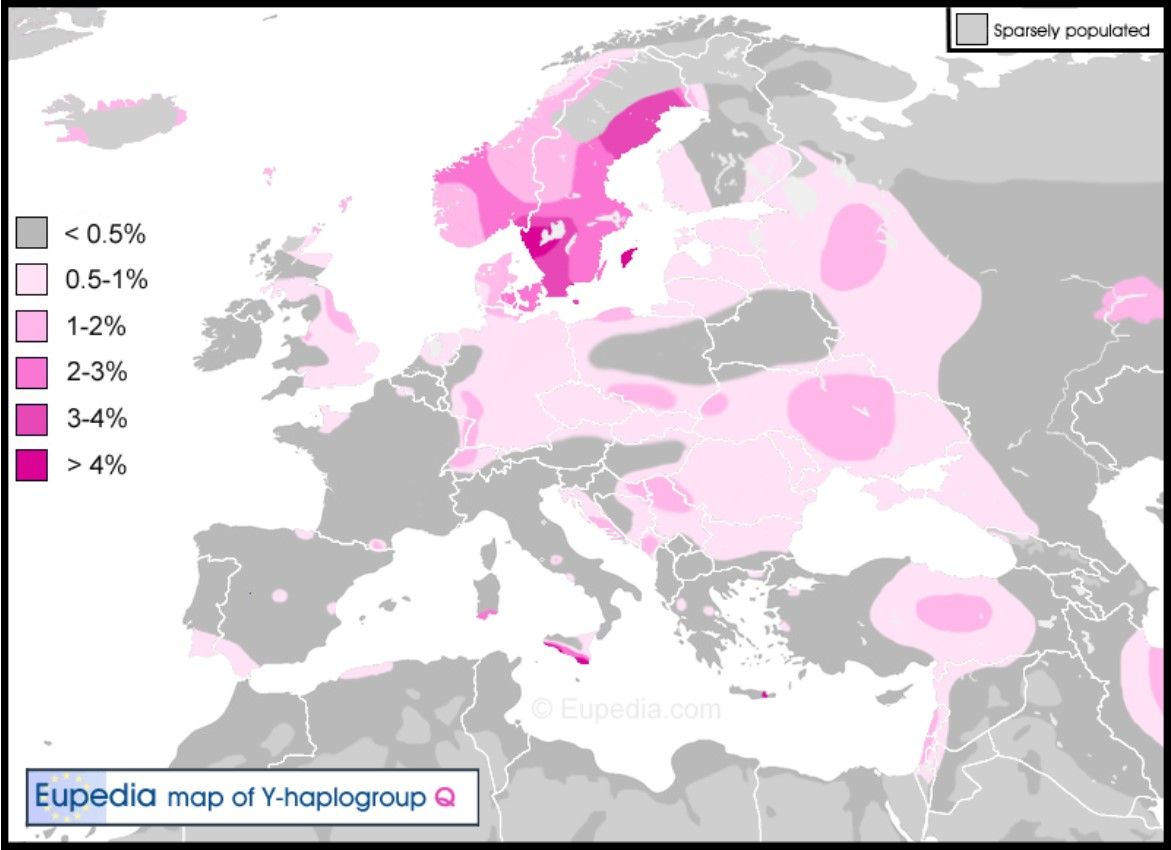
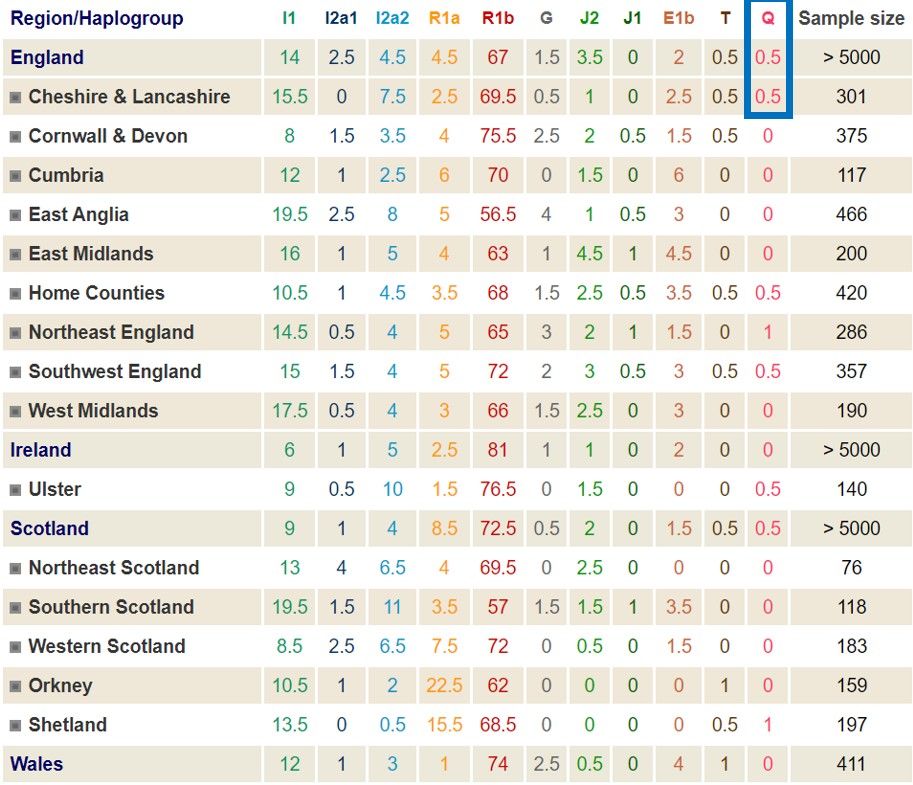
How did I do my testing?
I did my DNA test with FamilytreeDNA.com (FTDNA) because they offer deep Y-DNA testing. Ancestry does not do Y-DNA testing and 23andme does, however their Y-DNA database it too small to be useful. By using the Y-DNA testing at Family tree DNA, I found out my Y-DNA is Q-L807. Family Tree DNA has done much Y-DNA testing on native population in Europe and found that the parent of Q-L807 Y-DNA is Q-L804 and it came to England before the Norman invasion of 1066AD at around 902AD when the Norwegian Vikings settled near Chester, England on the Wirral Peninsula by agreement from the Queen of Mercia. If your ancestor includes Lawrence Pearson (b1620) I am confident his male bloodline came from Norway. If your ancestry does not include Lawrence Pearson (b1620) then your Pearson surname could have come from another direction. To study this further I suggest to have a male Pearson in your family (a brother or dad or yourself if your male) do a Y-DNA test at FTDNA to define your male surname Y-DNA. I will be curious of your results.
Vikings on the Wirral Peninsula in 902AD
In the year AD 902, a group of Vikings largely of Norwegian descent settled on the Wirral Peninsula after being forced out of Dublin, Ireland and Anglesey in Wales. Led by Ingimund, their ambitious leader, the Vikings sought additional room for farming and fishing, away from chronic overcrowding back home.
Ancient Irish annals record the settlement of the Wirral by Vikings, who where expelled from Ireland in around 902 AD and gained permission from Ethelfleda, Lady of Mercia and daughter of King Alfred the Great, to settle peacefully on the peninsula. The Wirral has the best-documented evidence of Viking settlement in Britain where up to 50% of its native residence can trace their DNA back to Norse origins.
The Viking community on Wirral grew quickly and became large. They had their own language and even a parliament located at Thingwall. The language they spoke was similar to the one spoken in modern-day Iceland. The parliament was possibly the first one established on British soil. Traders, farmers and fishermen arrived to help the community grow and expand their plot. They even built churches, with religious values being an important part of everyday life.
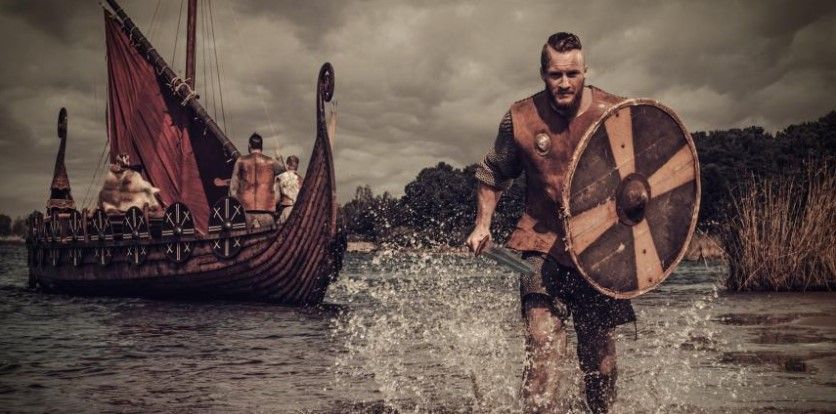

Member discussion: